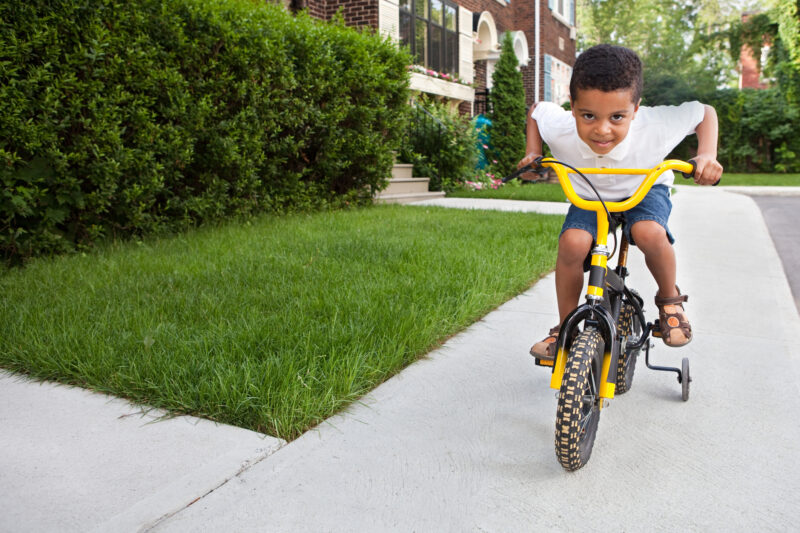Ralph Yarl shooting shows dangerous perception of Black children, experts say
Share
Explore Our Galleries
Breaking News!
Today's news and culture by Black and other reporters in the Black and mainstream media.
Ways to Support ABHM?
By Claretta Bellamy, NBC News

Why are Black children perceived as a threat? Experts point to long-held racial bias.
Andrew Lester told police he was “scared to death” when he saw a Black teenager at his front door. That fear drove the 84-year-old to shoot the teenager, Ralph Yarl, who had rang Lester’s doorbell by mistake. Lester’s fear represents a deep-seated negative perception of Black children, experts told NBC News, which has endured for centuries and leads to harsher treatment and punishment of those children.
“We have a history of looking at Black children as something other than valuable,” said NYU School of Law professor emerita Kim Taylor-Thompson. “We view them as more predatory.”
These negative perceptions, she said, are fueled by racial bias. Black children face what Taylor-Thompson calls a “triple threat,” or an exaggerated perception of their size, misperceiving them as older than their actual age and dehumanization.
Lester’s immediate reaction to seeing 16-year-old Yarl at his door reinforces a “racist trope that suggests that Black men are dangerous,” she said. Research shows that Black boys are perceived as larger and more fearsome than white boys of comparable size and stature, she added. In a 2014 report called “The Essence of Innocence: Consequences of Dehumanizing Black Children,” research confirmed that Black boys are viewed as older and less innocent than their white peers, and that the dehumanization of Black boys contributed to racial disparities in police violence toward Black children.
Jim Crow’s influence on racial stereotyping
The practice of labeling Black children as dangerous heightened in the Jim Crow era, as white mobs lynched and killed children like 14-year-old Emmett Till if they “dared to cross a racial boundary that white society invented and ruthlessly then enforced,” she said. The superpredator myth, a belief created by a criminologist arguing that Black youth contributed to the massive threat of crime and violence, emerged in the 1990s, causing many Black teenagers to receive harsher sentences and adult charges. This idea that Black children are dangerous, Taylor-Thompson said, “is an American phenomenon” with lasting effects.
Media coverage also contributes to the perception that Black children and teens are dangerous, Taylor-Thompson said. To cite just one well-known example, news coverage in 1989 of the Central Park Five case used the terms “wolf-pack” and “wilding” to describe the actions of five Black and Latino teenagers who were falsley accused of raping a white woman….
Taylor-Thompson said the harm done in stereotyping Black children often remains unacknowledged….
This, she added, is completely different compared to how society views white children.
“We reflexively give white children the benefit of the doubt,” Taylor-Thompson said. “We see a white child and we want to extend the benefits that are associated with childhood. We presume innocence. We want to give them care.”
These perceptions of and attitudes toward white children exist even when white youth engage in questionable behavior. One example she gives is Kyle Rittenhouse, a white teenager who faced homicide charges after fatally shooting two men during a protest over the killing of Jacob Blake in August 2020 in Kenosha, Wisconsin. A year later, a jury cleared Rittenhouse of all charges, including reckless homicide and intentional homicide.
“Of course, if a Black child had been doing the same thing, he wouldn’t have lived to tell the story,” Taylor-Thompson said.
Click here to read the whole article and see additional context.
If you want to help your community become more accepting, click here.
Visit the ABHM exhibit on Racial Repair and Reconciliation to find out ways that we as people and as a society can work to put an end to racial inequality.









Comments Are Welcome
Note: We moderate submissions in order to create a space for meaningful dialogue, a space where museum visitors – adults and youth –– can exchange informed, thoughtful, and relevant comments that add value to our exhibits.
Racial slurs, personal attacks, obscenity, profanity, and SHOUTING do not meet the above standard. Such comments are posted in the exhibit Hateful Speech. Commercial promotions, impersonations, and incoherent comments likewise fail to meet our goals, so will not be posted. Submissions longer than 120 words will be shortened.
See our full Comments Policy here.